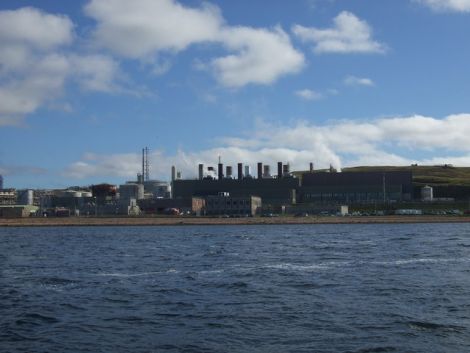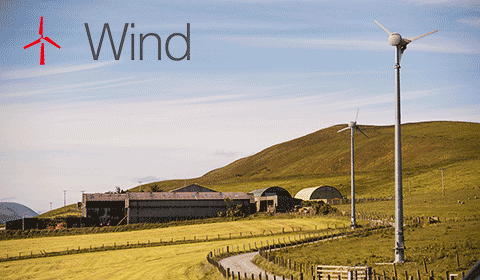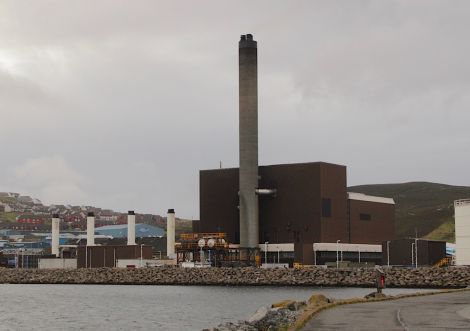Energy / Proposed interconnector offers new opportunities over how oil and gas sector could be powered
EnQuest confirms there will be a ‘radical change’ in Sullom Voe Terminal’s power set-up
THERE are new ways of thinking emerging over how Sullom Voe Terminal (SVT) as well as North Sea oil platforms could be powered in the future if Shetland’s proposed interconnector and the Viking wind farm are built.
Shetland Islands Council’s development director Neil Grant said he has “no doubt” the terminal – which has its own power station – will look to tap into any opportunities the proposed 600MW interconnector cable between Shetland and the Scottish mainland may bring if it comes to fruition.
SVT operator EnQuest said it would not comment on specifics – but a video recently released by the company said there will be a “radical change to Sullom Voe Terminal’s power generation facilities” by removing the existing power station in the coming years as it attempts to reduce emissions.
It comes as BP – which operates oil platforms in the waters west of Shetland – confirmed it is looking into the prospect of powering North Sea oil platforms with ‘green’ electricity, potentially through cables from the shore.
If the long-mooted subsea interconnector and the proposed 103-turbine Viking Energy wind farm goes ahead, with SSEN confirming that electricity from any large wind farms could be used to meet Shetland’s needs before surplus is exported, there is in theory the potential for SVT to be powered by locally produced green energy.
Grant said the local authority has been in discussions with government body Oil and Gas Authority and operators over the opportunities an energy cable between Shetland and the mainland could bring.
The Oil and Gas Authority is keen to integrate more green energy into the industry to reduce the sector’s sizeable carbon footprint, with the powering of offshore platforms from renewable sources one of many strands being explored.
Become a member of Shetland News
BP regional president Ariel Flores was reported as saying this week that the energy giant is exploring its options when it comes to new ways of powering oil platforms.
“We’re assessing where to get power from and there you’ve got multiple options,” he told Energy Voice. “You’ve got offshore wind, you’ve got onshore wind, you’ve got cables and interconnectors being discussed between Shetland and you’ve got a Norwegian interconnector going to mainland UK.”
SVT power station operator Engie has a contract at the site until 2024 – the year when SSEN’s proposed 600MW HVDC interconnector, which would link Shetland to the national grid for the first time across 250km of cable, is projected to be delivered.
The prospect of the £700 million subsea interconnector, however, still remains unclear after the SSE-backed Viking Energy wind farm – which the cable hinges on – failed to win government subsidy earlier this year.
Energy regulator Ofgem recently called for revised proposals from SSEN for a transmission link following island wind projects’ failure in the UK Government’s Contracts for Difference auction, and without any formal progress on this yet, the plans remain on hold.
Despite this, ground investigation work has been carried out by contractors for SSEN between Weisdale Voe and the site for the proposed converter station at Kergord. Viking Energy has always said it remains committed to the project.
Both Viking Energy and the interconnector has its critics locally, however, with a feeling from some that the large renewable developments will damage the environment and that smaller, community-based projects are the way forward.
Gas, meanwhile, is used to fuel the 100MW Sullom Voe power station, which provides electricity and steam to the terminal as well as pumping up to 15MW of energy into the local grid. Ofgem said last year that the station – one of the top 20 emitters of CO2 in Scotland – meets on average around 40 per cent of Shetland’s electricity demand.
The oil-fuelled 67MW Lerwick Power Station is also set to close by 2025 as its lifespan comes to an end, with emissions regulations also looming over the ageing facility, and renewable energy and imports through the transmission link are in line to take its place.
One theory is that SVT could potentially import energy from SSEN instead of generating on-site if a new supply system and interconnector are in place, but operator EnQuest declined to comment on specifics.
However, a video released by EnQuest recently on the ‘transformation’ of SVT over the coming years and decades says there will be a “radical change” to Sullom Voe Terminal’s power generation facilities – and this involves removing the existing station and installing a new, smaller facility.
This will “improve the cost base and will also ensure the contribution to the UK’s net carbon zero target” by utilising renewable energy.
The video also includes footage of large wind turbines as operations leader Colin Nicholson talks about EnQuest’s aim to cut emissions in its power usage.
It is understood that at one point the SVT power station was taking in a figure around £10-12 million a year from SSEN for power exported to the local grid, and if the interconnector goes ahead then the operator could lose this sizeable income if the energy giant decides to source the power from elsewhere.
The nearby Shetland Gas Plant, run by Total, has its own smaller private power station which does not sell energy to the grid.
The Viking Energy team say the 457MW wind farm would provide enough electricity to meet the annual need of up to 475,000 homes.
But it is not just Viking that is proposed, with Yell’s Energy Isles (up to 200MW) and Peel Energy’s Mossy Hill (up to 50MW) and Beaw Field (57.8MW) also wind farms which have been mooted.
In 2017 there was a peak demand for electricity in Shetland of 43.8MW in the winter and a minimum demand of around 11.3MW in the summer months.
Current SVT operator EnQuest in a statement said it would “not comment on specifics but as part of the terminal transformation programme, EnQuest are looking at a number of ways to make the terminal competitive to retain and win new business and remain fit for purpose”.
“We are committed to maximising the economic life of SVT as a strategic piece of North Sea infrastructure,” it said.
It is also thought that the SVT power station – built in the 1970s – is considered too big, particularly based on the reduced activity at the terminal now compared to its heyday, making it inefficient to run.
Shetland Islands Council development director Neil Grant said SVT “has an issue going forward with what would be an effective, sustainable power supply”.
“I think there’s an opportunity for Sullom Voe to get its power from the grid, rather than its own generation,” he said.
“We’ve been in discussion with the Oil and Gas Authority and indeed the operators about the opportunities that an electric interconnecting cable would bring.
“I think what everybody is waiting for at the moment is some sort of certainty over whether the interconnector is going to happen or not.
“If it does come, I think there’s no doubt in my mind that not only Sullom Voe but a lot of the offshore infrastructure will look to connect onto it, so they can actually use that green energy rather than burn hydrocarbons to generate their power.”
Grant added that he would be “very surprised” if the oil and gas sector did not make “best use” of an interconnector if it arrived.
A spokesperson for SVT power station operator Engie, meanwhile, said about the facility’s future plans: “Engie has a power purchase agreement with SSE for power export from Sullom Voe terminal until 2024 with no formal knowledge of arrangements after this date.
“We are currently not in a position to clarify future plans.”
Last year operations director at the Oil and Gas Authority Gunther Newcombe suggested that the power station at SVT could be removed to free up space – owing to less to demand – to allow diversification on site as oil throughput reduces.
SSEN, meanwhile, said: “The proposed transmission link from Shetland to the north of Scotland would meet Shetland’s dual electricity needs of supporting its future security of supply as well as unlocking Shetland’s renewable electricity potential.
“This includes the potential for both the transmission link and the output from renewable generators on Shetland to support the electricity needs of Shetland’s oil and gas industry.”
The energy giant said the transmission infrastructure is expected to be in place mid-2024 if it gets approval from Ofgem.
“Should the current transmission proposal proceed, SSEN Distribution is required to establish standby arrangements to ensure that electricity demand can be met during transmission network outages,” a spokesperson added.
“We will shortly commence a process to identify and secure these requirements.”
The Scottish Environment Protection Agency (SEPA) said it is in “detailed discussions” regarding the future make-up of the SVT power station in light of European emissions regulations.
A spokesperson said: “SEPA reviewed the Pollution Prevention & Control (PPC) permit for the site in 2017/18 and are in detailed discussions regarding the future configuration of the site to ensure compliance with the EU Industrial Emissions Directive (DIRECTIVE 2010/75/EU of 24 November 2010 on industrial emissions).”
The Oil and Gas Authority said it was unable to comment due to the pre-election period.
Become a member of Shetland News
Shetland News is asking its many readers to consider paying for membership to get additional features and services: -
- Remove non-local ads;
- Bookmark posts to read later;
- Exclusive curated weekly newsletter;
- Hide membership messages;
- Comments open for discussion.
If you appreciate what we do and feel strongly about impartial local journalism, then please become a member of Shetland News by either making a single payment, or setting up a monthly, quarterly or yearly subscription.
















































































